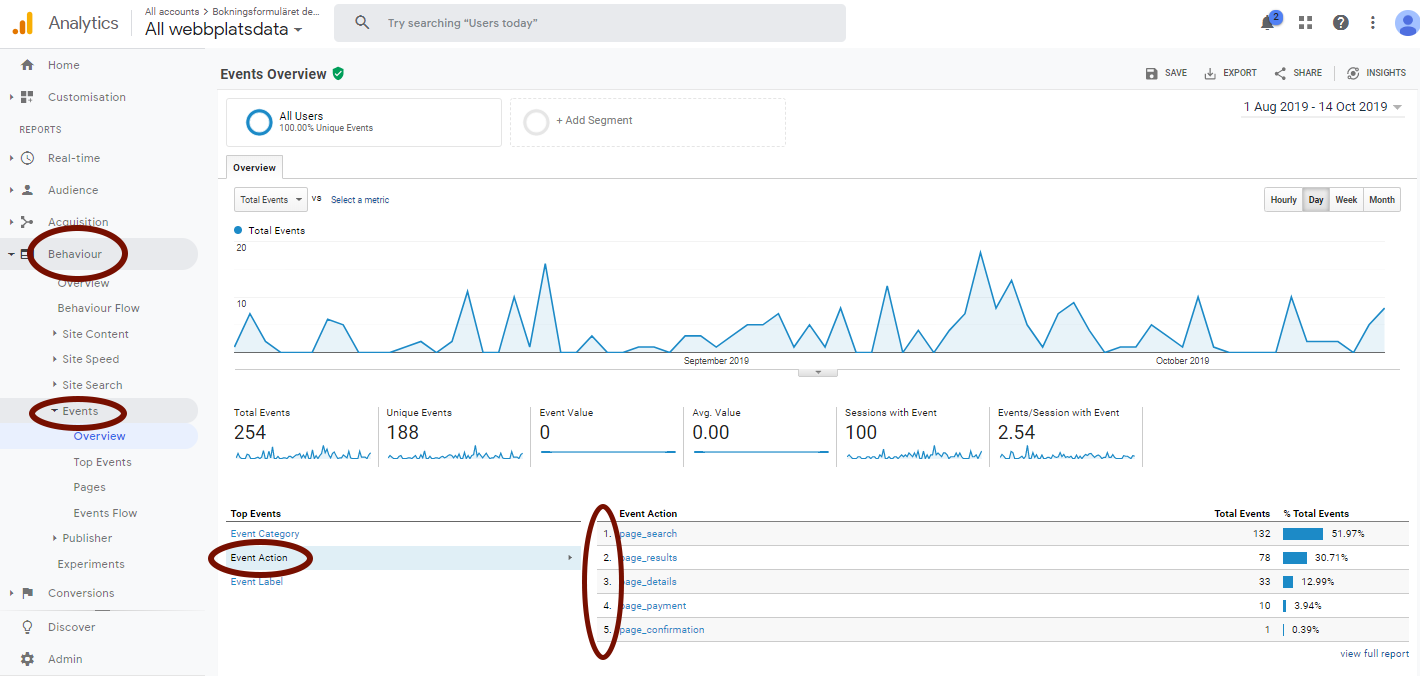Top Guidelines Of Google Analytics Event Tracking
Table of ContentsExamine This Report on Google Analytics Event TrackingGoogle Analytics Event Tracking - TruthsThe 30-Second Trick For Google Analytics Event TrackingTop Guidelines Of Google Analytics Event TrackingThe Only Guide to Google Analytics Event TrackingExamine This Report about Google Analytics Event Tracking

If you're mosting likely to establish event monitoring manually, after that you're mosting likely to have to include some extra code to the aspects you wish to gather information from. The code you're going to function with will look something similar to this: There are four elements within that code snippet that you're going to need to define on your own: occasion, Group, occasion, Activity, event, Tag and occasion, Value.
As you can see, two of these are needed (group and action) while label and value are optional. Everything relies on the kind of info you desire passed on back to Google Analytics when a customer clicks on the defined aspect (Google Analytics Event Tracking). It will certainly be a lot easier to define these components if you analyse your internet site and decide which elements/actions you want to track
Google Analytics Event Tracking for Dummies
Currently, you'll be asked to define the and and you'll wish to select from the drop-down menu that shows up when you click. This will bring up the very same occasion monitoring elements we checked out earlier, which you'll need to fill out. Once you have actually specified these, you can move down to the 2nd box and pick the trigger that will terminate your tag.
On the next screen, you'll additionally have an area for naming your trigger and, if you click package, you'll see a checklist of the various triggers you can choose. In this case, we wish to choose and afterwards select the choice below. After that you'll set the trigger to only discharge when an aspect is clicked with a link that consists of the.
Every internet site talks. Before data analytics, we could not hear the voices of our sites. Exactly how do you recognize what your website is claiming? Easy - Occasion tracking! Occasion monitoring offers you a photo of just how individuals involve with your site and company (Google Analytics Event Tracking). Do you would like to know more? Review on as we check out whatever you require to know, including what it is, why you must track events, how to manage occasions data, and other appropriate Frequently asked questions you may have.
Google Analytics Event Tracking for Dummies
You can change between your event categories, actions, and tags in the Leading Events report. This report is vital for digging additionally into research on a certain event category. The Event Pages record presents the pages where occasions are activated. In this section, we can examine the leading web pages that drive occasions.
It shows you the course click for source they take as they relocate from one event to the following and aids you to identify which material engages Bonuses your target market the a lot of. Events in Google Analytics have 4 primary aspects. They are additionally a component of the occasion monitoring code. Google Analytics makes use of these codes to track individual communications and team them into occasion records.
Pick "Variables" > "Configure". A list of the criteria you can track on your web site gets on the right. Under Clicks, Forms, and Videos, double-check each criterion. After checking all needed areas, you can click "X" to close the home window and return to the Review menu on the.
An Unbiased View of Google Analytics Event Tracking

Selecting "False" will avoid that session from being a bounce. If you haven't done so, you may need to establish a variable in the Google Analytics Settings box. Click "New Variable ..." if you can't discover one to select. Hereafter, enter your GA monitoring ID in the Tracking ID area.
To do this, follow the next series of activities: After setting up Going Here the fields, select the "Triggering" section. When configuring your brand-new trigger, click the "+" switch, then the "pencil" button, after that select your trigger type.
The smart Trick of Google Analytics Event Tracking That Nobody is Discussing

When it familiarizes which sections and elements are assisting customers with your conversion channel, you still won't understand. Without event monitoring, GA records will only count visits as single-page sessions, even if customers spend a great deal of time on one web page and engage with it substantially (and a bounce).
However just how does event tracking achieve this?Single-page sessions called bounces start and wrap up on the exact same web page. Without event tracking, GA will certainly categorize a customer's visit as a bounce if they do not navigate to an additional page, no matter how they interact with it. For example, a video-rich page can have a greater bounce rate if occasions are not tracked.
The Best Strategy To Use For Google Analytics Event Tracking
For GA to take occasion hits into account when gauging bounce rates, you must pick "Non-interaction event" as "False" throughout the GTM configuration. Setting "occasion goals" with event activity is an exceptional way to monitor individual activities you worth highly, such as brand-new lead entries or clicks on a phone call to activity.